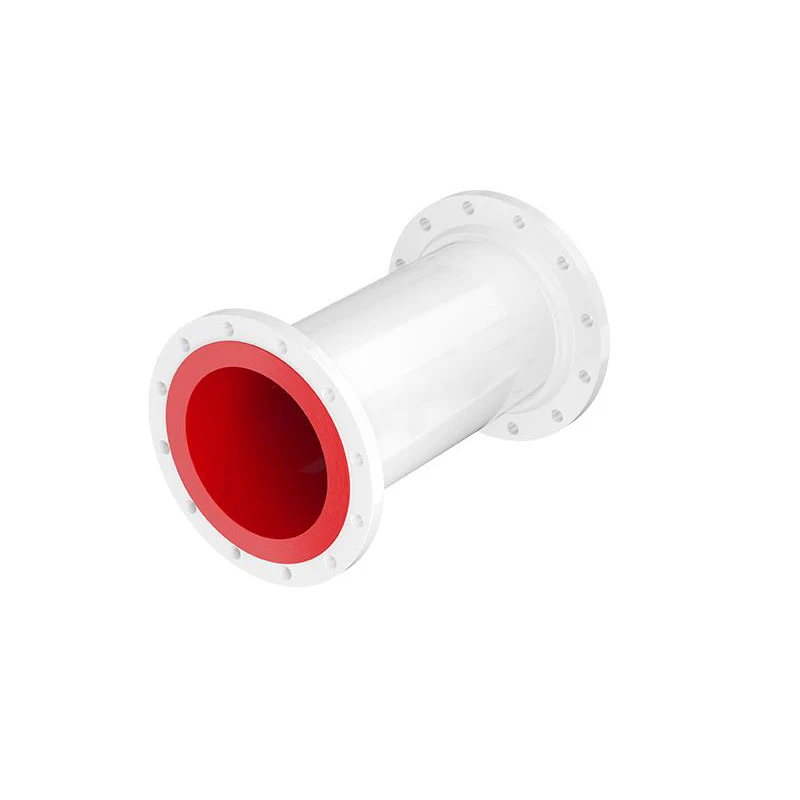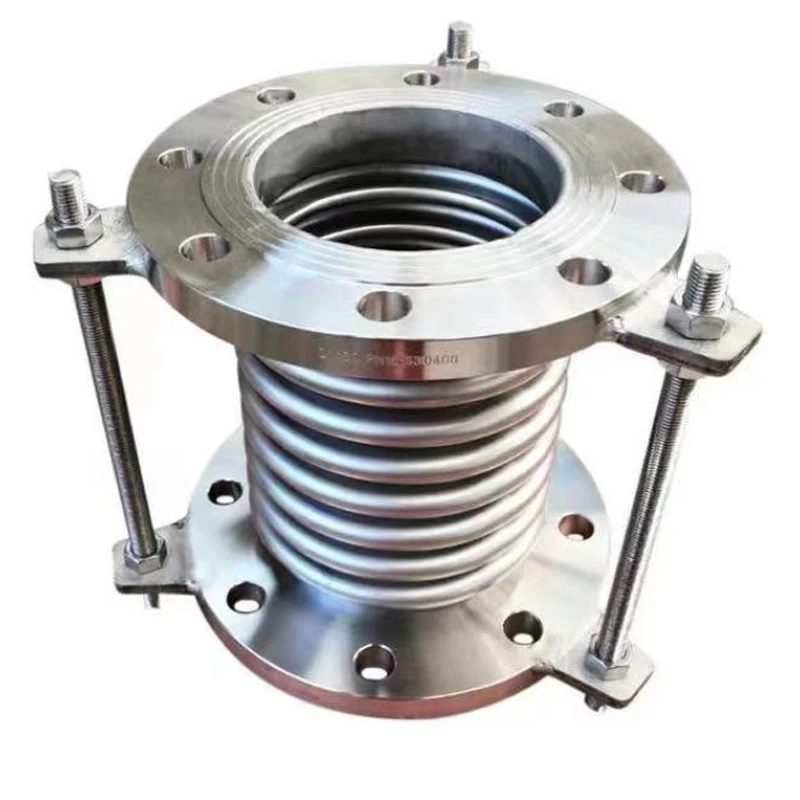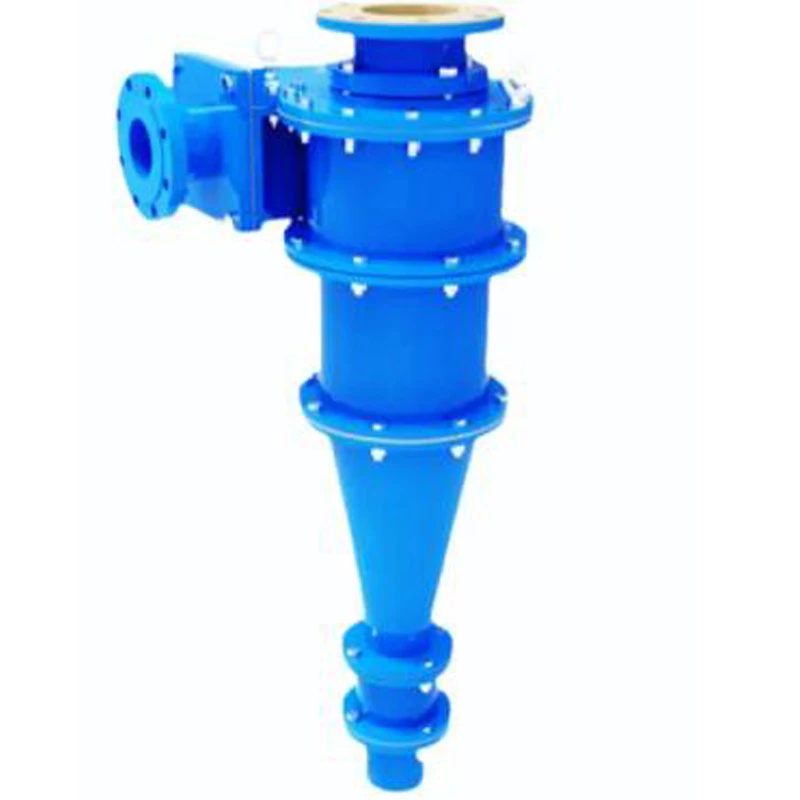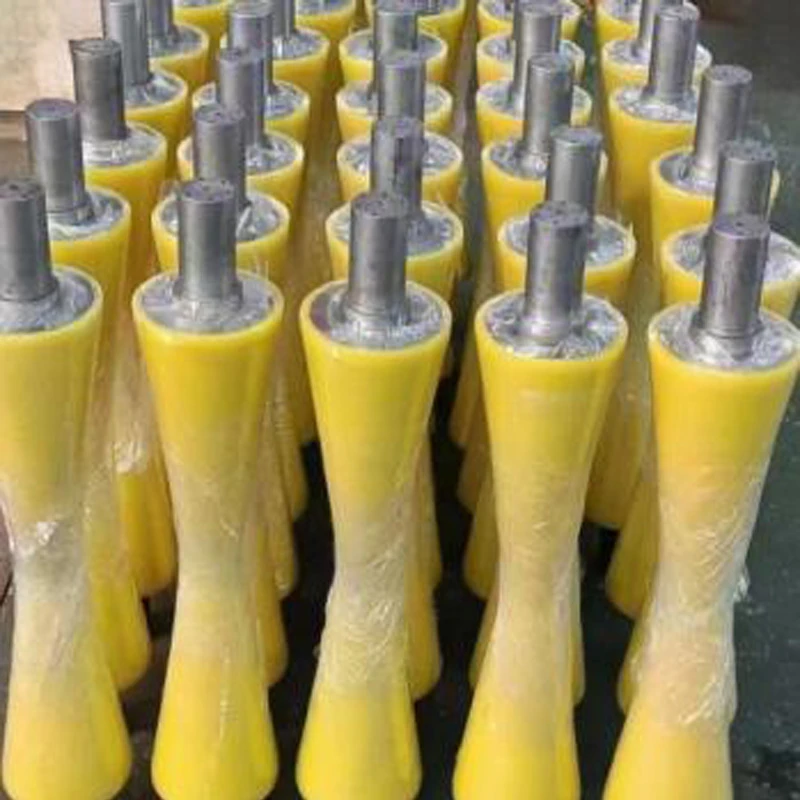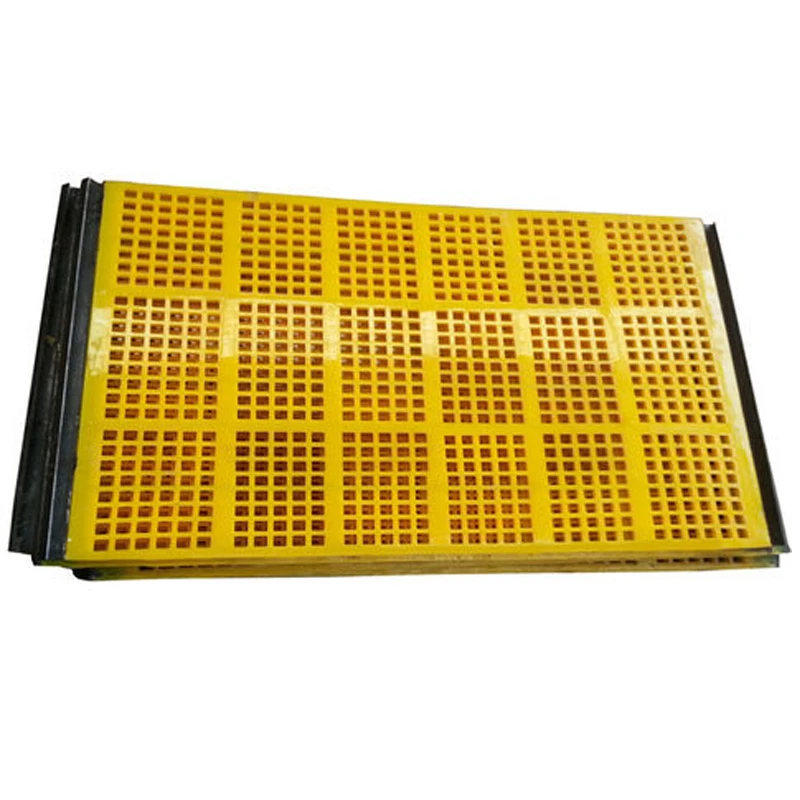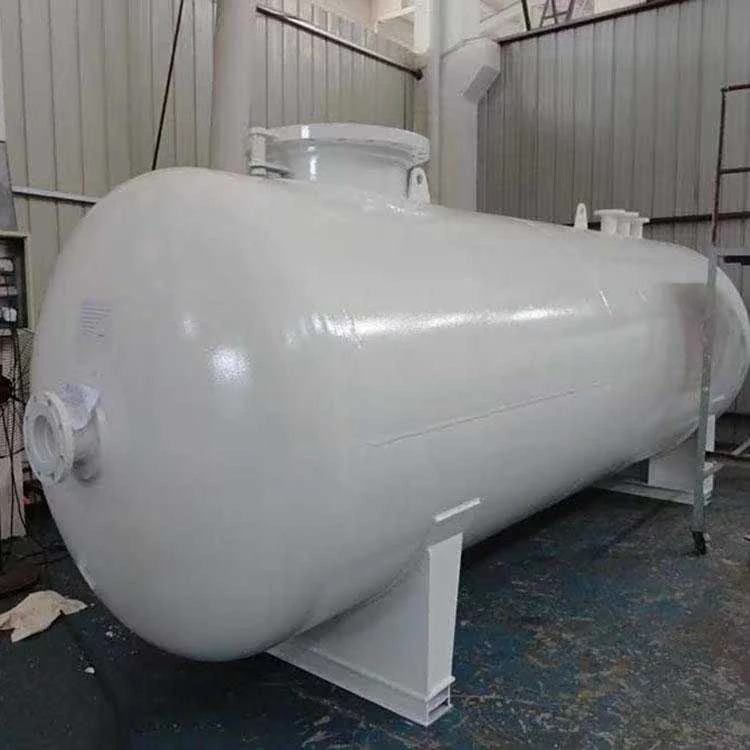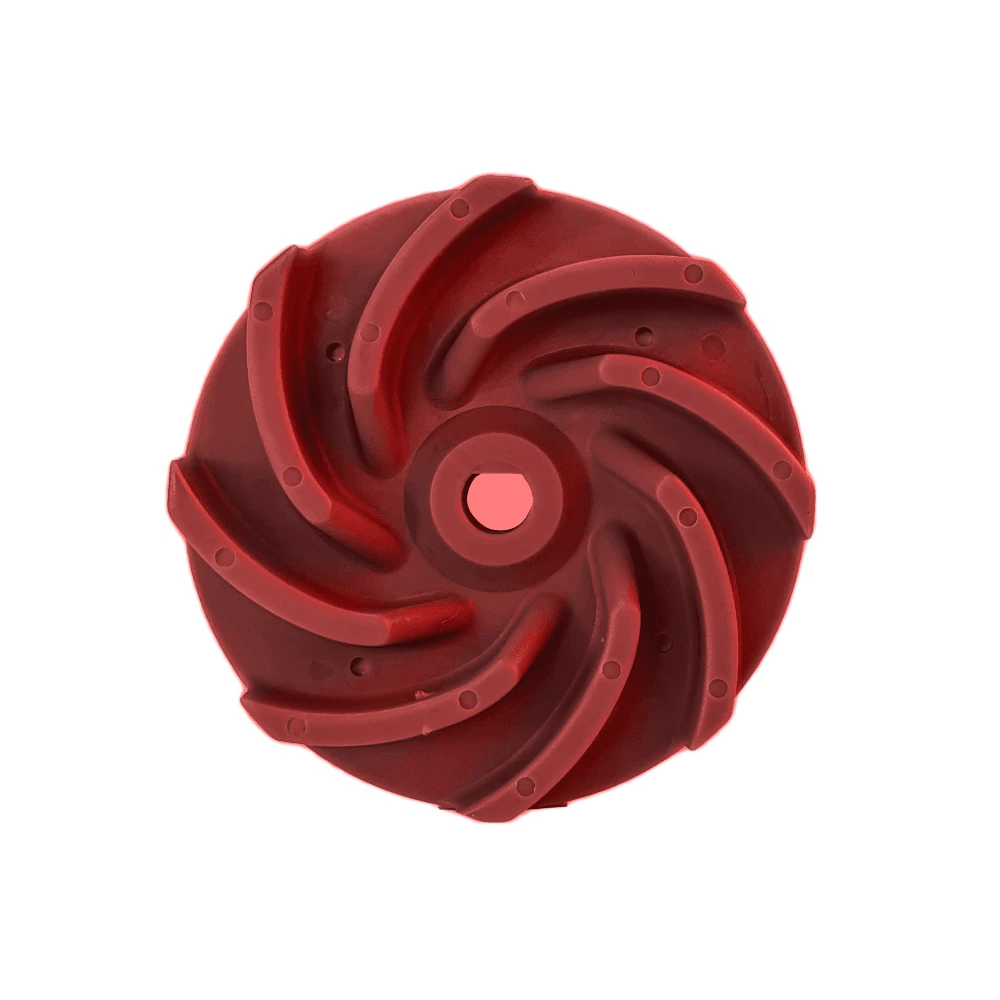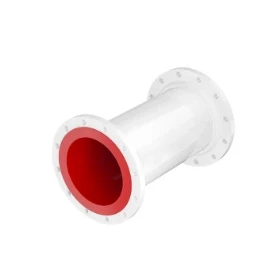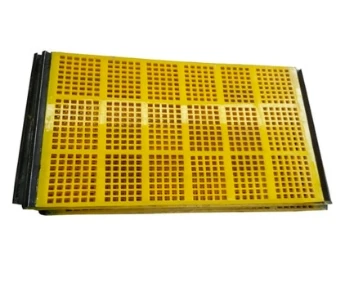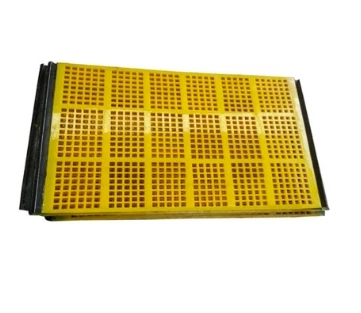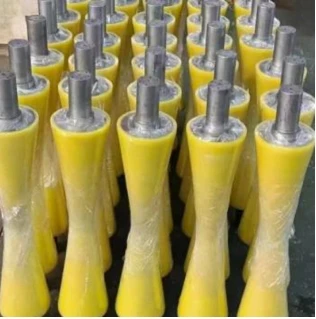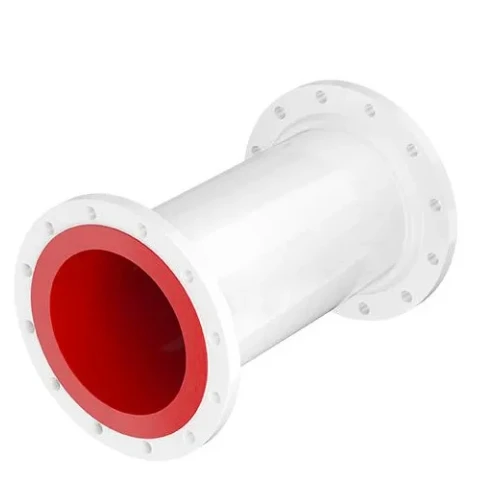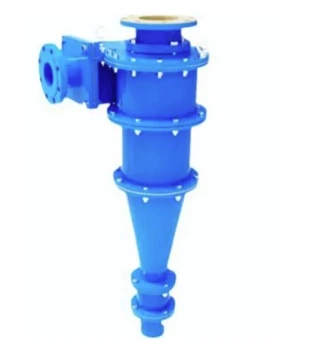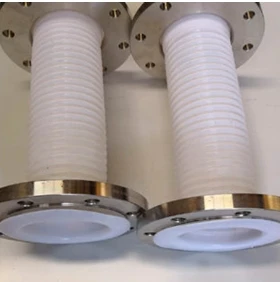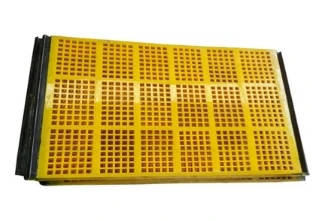Discover Types of Cyclone Separators: Micro, Sand & High Efficiency
Understanding Cyclone Separator Technology: An Industry Overview
In diverse industrial processes, the efficient separation of particulate matter from gas streams is not merely a matter of operational convenience but a critical prerequisite for maintaining equipment integrity, ensuring environmental compliance, and achieving desired product purity. Within the extensive portfolio of separation technologies available today, the types of cyclone separator emerge as particularly robust and cost-effective solutions for the removal of solid particulates. This technology masterfully harnesses centrifugal force to achieve separation, delivering substantial advantages across a vast spectrum of applications—from fundamental dust collection in manufacturing plants and woodworking facilities to highly specialized and critical functions like fluid catalytic cracking in the petrochemical industry. The remarkable versatility of cyclone separators is further enhanced by the wide array of configurations and material selections available, enabling their seamless deployment in the most demanding industrial environments, including those characterized by extreme temperatures, highly corrosive gases, or the presence of highly abrasive particles. For discerning engineers and shrewd procurement specialists, a profound understanding of the intricate mechanics and operational parameters that govern these sophisticated devices is absolutely crucial. This knowledge empowers them to meticulously optimize their industrial air and gas purification systems, ensuring not only compliance but also superior performance. Our comprehensive overview systematically delves into the core principles, advanced manufacturing techniques, and strategic applications that collectively define modern cyclone separator technology, ensuring that decision-makers are thoroughly equipped with the insights needed to confidently select and effectively implement the most appropriate solutions for their specific industrial challenges. This strategic approach ultimately enhances operational efficiency, extends equipment lifespan, and safeguards investment through superior particulate control.
The continuous evolution and increasing complexity of industrial processes have persistently amplified the demand for more efficient, reliable, and adaptable separation technologies. In this context, various types of cyclone separator, distinguished by their relatively straightforward design and inherently low maintenance requirements, have consistently proven their mettle as indispensable assets. Their profound efficacy is fundamentally rooted in the principle of inertial separation, a physical phenomenon where particulate-laden gas is introduced tangentially into a cylindrical chamber. This tangential entry initiates the formation of a high-speed vortex, a powerful spiraling flow that extends downwards into a conical section. The intense centrifugal action generated by this vortex propels the denser particulate matter outwards towards the chamber's outer wall. Upon contact with the wall, these heavier particles lose momentum and, under the influence of gravity, descend into a dedicated collection hopper located at the bottom of the separator. Simultaneously, the now-cleaner gas spirals upwards through an inner vortex and exits the system through an outlet pipe, ready for further processing or discharge. The overall effectiveness of this separation process is intricately dependent on a multitude of critical factors, including the precise particle size distribution, the velocity of the gas stream, and, most critically, the specific geometric configuration of the separator itself. Recent advancements in computational fluid dynamics (CFD) modeling and material science have catalyzed the design of highly specialized cyclone configurations, including those meticulously optimized for the removal of extremely fine particles, such as those addressed by a micro cyclone separator, or units specifically engineered to withstand the rigors of highly abrasive media, exemplified by the robust sand cyclone separator. These continuous innovations collectively ensure that cyclone separators steadfastly remain at the cutting edge of particulate control technology, demonstrating unparalleled adaptability to the increasingly stringent environmental regulations and the ever-more demanding operational conditions encountered by industries across the globe.
Manufacturing Excellence: Crafting Advanced Cyclone Separators
The manufacturing process of high-performance types of cyclone separator represents a meticulously executed undertaking that seamlessly blends sophisticated engineering principles with state-of-the-art precision fabrication techniques. The foundational step involves the judicious selection of materials, wherein premium grades of carbon steel, various stainless steel alloys (such as SS304 and SS316L), and specialized high-performance alloys like Hastelloy or Inconel are chosen. This selection is rigorously based on a comprehensive assessment of the intended application's specific operating parameters, including ambient and process temperatures, working pressures, and the nature of the corrosive or abrasive environment. For instance, applications prevalent in the petrochemical sector or the mining industry frequently necessitate the integration of high-chromium cast iron or specialized ceramic linings to significantly enhance wear resistance. This is particularly crucial when processing highly abrasive particulates, such as those typically encountered by a sand cyclone separator. The core manufacturing processes typically commence with the precision cutting and intricate forming of metal sheets, followed by the application of advanced welding techniques, including Tungsten Inert Gas (TIG) or Metal Inert Gas (MIG) welding. These advanced welding methods are employed to guarantee exceptional structural integrity and the creation of absolutely leak-proof seams, which are vital for the operational safety and efficiency of the unit. Furthermore, critical components, including the involute inlet, the conical section, and the vortex finder, undergo rigorous Computer Numerical Control (CNC) machining. This precision machining ensures the attainment of extremely tight geometric tolerances, which are absolutely essential for optimal separation efficiency and the minimization of pressure drop across the system. This unwavering commitment to precision is paramount across all types of cyclone separator, encompassing everything from colossal industrial units designed for high throughput to compact micro cyclone separator designs, where even the slightest deviations in geometry can profoundly impact performance metrics.
An uncompromising commitment to quality control is meticulously integrated at every single stage of the manufacturing process, ensuring strict adherence to global industry standards. This includes compliance with ISO 9001 for comprehensive quality management systems, the stringent ASME Boiler and Pressure Vessel Code for structural integrity, and relevant ANSI standards governing dimensions and fittings. To rigorously verify weld integrity and to meticulously detect any potential material flaws or discontinuities, a battery of non-destructive testing (NDT) methods is routinely employed. These advanced NDT techniques encompass radiographic inspection (RT), ultrasonic testing (UT), magnetic particle testing (MPT), and liquid penetrant testing (LPT). Following the fabrication phase, specialized surface treatments are applied to further enhance the durability and performance of the cyclone separators. These treatments may include sandblasting for surface preparation, passivation to improve corrosion resistance in stainless steels, or the application of proprietary specialized coatings tailored to specific environmental challenges. These enhancements collectively contribute to prolonging the service life of the equipment, which can typically span a remarkable 10 to 25 years, contingent upon the specific operating conditions and the diligence of the maintenance regimen. In critical industries such as petrochemicals, metallurgy, power generation, and water/wastewater treatment, where continuous operation and the minimization of downtime are paramount, the superior design and unparalleled manufacturing quality of our cyclone separators directly translate into tangible operational advantages. These benefits include significantly reduced energy consumption attributed to a lower pressure drop, enhanced anti-corrosion properties that ensure exceptional longevity even in the harshest chemical environments, and overall operational stability that safeguards productivity. This steadfast commitment to manufacturing excellence guarantees that each cyclone separator unit delivered provides reliable, long-term performance even in the most demanding industrial applications, consistently upholding the highest benchmarks of safety, efficiency, and environmental responsibility.
Technical Parameters and Performance Metrics
The performance characteristics of the various types of cyclone separator are precisely quantified by a set of crucial technical parameters, which are absolutely essential for accurate system design, optimization, and performance prediction. Foremost among these is the "cut point," frequently denoted as D50. This critical metric represents the particle size at which exactly 50% of the particles are effectively captured and separated from the gas stream. For conventional industrial cyclones, the D50 typically falls within the range of 5 to 20 micrometers (µm). However, for advanced, high-efficiency designs, particularly those engineered as a micro cyclone separator, the achievable cut points can be significantly lower, often reaching an impressive 2-5 µm. This enhanced capability makes them exceptionally suitable for the ultra-fine particulate removal required in sensitive applications. Another pivotal parameter is the pressure drop, which precisely quantifies the energy consumed by the gas stream as it traverses through the separator. Lower pressure drops, typically ranging from 0.5 to 2.5 kilopascals (kPa) for most industrial cyclone applications, are a direct indicator of superior energy efficiency. This reduction in energy consumption can translate into substantial operational cost savings over the entire lifespan of the equipment, making it a key factor in overall system economics. The separation efficiency, universally expressed as a percentage, inherently varies with the size and density of the particles; generally, it exhibits an increasing trend with larger particle diameters and higher particle densities, often achieving impressive efficiencies upwards of 95-99% for particles larger than the specified cut point. Furthermore, the gas flow rate capacity, which can span from a few hundred to several hundred thousand cubic meters per hour (CMH), is a crucial determinant of the volume of gas that can be processed effectively and efficiently by a particular unit.
The operational temperature and pressure limits constitute equally vital considerations in the design and selection of cyclone separators. While standard units are engineered to capably handle temperatures reaching up to 400°C and pressures up to 1 MPa, highly specialized models designed for extreme industrial applications can robustly endure temperatures exceeding 800°C and pressures up to 5 MPa. These demanding parameters are meticulously engineered by carefully selecting specific material properties and optimizing the structural design to ensure long-term integrity and performance. For instance, a sand cyclone separator, specifically designed for handling highly abrasive media, might feature an exceptionally robust construction incorporating specialized abrasion-resistant liners. This design choice directly impacts its operational lifespan and the frequency of maintenance required, showcasing how design adapts to application severity. Computational Fluid Dynamics (CFD) modeling plays an increasingly pivotal role in both predicting and optimizing these critical parameters during the intricate design phase. CFD simulations allow for virtual testing under a myriad of simulated operating conditions, thereby ensuring that the final product consistently meets and often surpasses stringent performance guarantees. The extensive data derived from rigorous laboratory testing and invaluable field validation consistently demonstrate that meticulously designed cyclone separators deliver consistently high and reliable performance. This consistent performance contributes significantly to achieving reduced emissions, ensuring stricter environmental compliance, and markedly improving process purity across a wide spectrum of diverse industrial sectors. Our unwavering commitment to leveraging advanced simulation tools, coupled with implementing rigorous testing protocols, ensures that our custom-engineered solutions deliver unparalleled optimal performance and exceptional long-term reliability for every client.
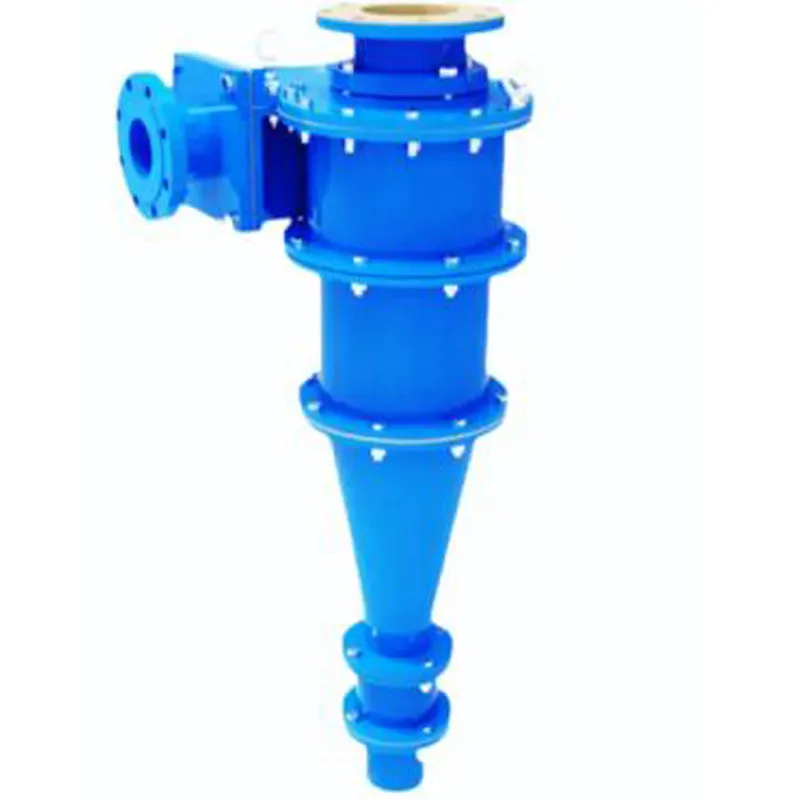
Comparative Parameters of Cyclone Separator Types
| Parameter | Standard Cyclone | High-Efficiency Cyclone | Multi-Cyclone (Micro Cyclone Separator) | Abrasive Duty (Sand Cyclone Separator) |
|---|---|---|---|---|
| Typical D50 Cut Point | 10-20 µm | 5-10 µm | 2-5 µm | 15-30 µm (optimized for wear) |
| Pressure Drop | 0.5-1.5 kPa | 1.5-3.0 kPa | 2.0-4.0 kPa | 0.8-2.0 kPa |
| Max Operating Temp. | ~400°C | ~550°C | ~450°C | ~700°C (with refractory lining) |
| Primary Material | Carbon Steel, SS304 | SS316L, High-Temp Alloys | SS304/316L (precision fabrication) | Abrasion-Resistant Alloys, Ceramic Liners |
| Typical Application | General dust collection, pre-filters | Fine dust removal, product recovery | PM2.5 pre-treatment, pharmaceutical, food processing | Mining, cement, abrasive material handling |
Diverse Applications and Strategic Advantages
The inherent adaptability and proven effectiveness of various types of cyclone separator render them absolutely indispensable across a vast multitude of industrial sectors and critical applications. In the dynamic petrochemical industry, for instance, cyclone separators play a profoundly critical role in the vital process of catalyst recovery within fluid catalytic cracking (FCC) units. Here, the operating conditions are notoriously challenging, characterized by extremely high temperatures and the pervasive presence of highly abrasive catalysts. These demanding parameters necessitate separation technology that is not only exceptionally robust but also incredibly efficient, a role perfectly fulfilled by advanced cyclone designs. Their unique ability to operate seamlessly at elevated temperatures and pressures, crucially without any mechanical moving parts, provides a distinct and significant advantage over many other conventional separation technologies. In the metallurgy sector, cyclone separators are extensively employed for the crucial task of dust collection in smelting and refining processes, facilitating the recovery of valuable metal dust and simultaneously ensuring significantly cleaner air emissions, contributing to both economic and environmental sustainability. The cement industry, too, utilizes them on a grand scale for the separation of clinker dust and raw meal. In this application, the sheer volume and intensely abrasive nature of the particulates demand exceptionally resilient designs, frequently incorporating specialized features commonly found in a sand cyclone separator, such as abrasion-resistant liners. Even in highly specialized and sensitive applications, such as pharmaceutical manufacturing and food processing, meticulously designed micro cyclone separator units are deployed for ultra-fine powder recovery and stringent sterile air purification, unequivocally demonstrating their exceptional versatility and precision in critical, regulated environments.
Beyond these prominent industrial sectors, cyclone separators fulfill essential and critical roles in myriad other applications, including power generation (for the efficient collection of fly ash), woodworking (for the effective removal of sawdust and wood chips), and chemical manufacturing (for both product recovery and the abatement of harmful fumes). The core technical advantages offered by these versatile separators are manifold and contribute significantly to operational efficiency and cost-effectiveness. Their inherent simplicity in design directly translates to considerably lower capital costs when compared to more complex filtration systems like baghouses or electrostatic precipitators. Furthermore, they demand significantly reduced maintenance requirements, primarily owing to the complete absence of filters that need periodic cleaning or replacement, or complex electrical components that can fail. This robust and straightforward construction also inherently ensures an exceptionally long operational lifespan, even when deployed in the harshest and most demanding industrial environments. Moreover, cyclone separators demonstrate unparalleled effectiveness at capably handling high dust loads and maintaining performance at high temperatures, conditions under which many other filtration technologies would either rapidly degrade or completely fail. Their dry collection method eliminates the burdensome need for expensive wastewater treatment processes typically associated with wet scrubbers, thereby contributing substantially to both environmental sustainability and considerable operational savings. For instance, in an industrial setup where large particles require pre-separation before entering a finer filtration stage, a well-designed cyclone separator can dramatically extend the operational life of the downstream filter, leading to significant cost reductions in replacement parts and associated labor. This compelling combination of high efficiency, exceptional durability, and superior cost-effectiveness firmly establishes cyclone separators as a strategic and invaluable investment for any industrial operation grappling with particulate-laden gas streams, unequivocally reinforcing their foundational position as a core component in modern air pollution control and essential material recovery systems.
Choosing the Right Partner: Manufacturer Comparison and Custom Solutions
The decision of selecting the optimal manufacturer for various types of cyclone separator is a profoundly critical strategic choice that will significantly influence long-term operational performance, reliability, and ultimately, the total cost of ownership for any industrial enterprise. While a multitude of vendors offer standard, off-the-shelf models, truly leading manufacturers distinguish themselves through an unparalleled blend of profound engineering expertise, unwavering manufacturing precision, and a deep-seated commitment to delivering highly customized solutions tailored to specific client needs. Key differentiators that set these top-tier companies apart include the remarkable breadth and depth of their product line, encompassing everything from massive, single high-throughput units designed for large-scale industrial operations to highly modular multi-cyclone arrays meticulously engineered for specialized applications requiring a micro cyclone separator. Reputable manufacturers also place a strong emphasis on continuous and rigorous Research & Development (R&D) efforts, leveraging advanced Computational Fluid Dynamics (CFD) simulations and extensive empirical testing to meticulously fine-tune their designs. This iterative process allows them to optimize cyclone performance for highly specific particle characteristics, gas compositions, and flow dynamics. Their manufacturing facilities frequently hold prestigious certifications such as ISO 9001:2015 for quality management, the ASME U Stamp for pressure vessels, and all other relevant regional and international approvals, unequivocally demonstrating their steadfast adherence to the highest international quality and safety standards. Furthermore, a demonstrably strong track record, evidenced by a robust portfolio of successful projects with major industry players and a substantial history of dedicated service (e.g., over two decades of continuous operation), speaks volumes about their reliability, authority, and sustained excellence in the field. Prospective clients should actively seek partners who offer comprehensive technical support, extending far beyond the mere product sale to include crucial services such as feasibility studies, custom engineering designs, diligent installation supervision, and robust post-sales maintenance programs, rather than simply providing generic products.
The capacity to provide highly customized solutions is absolutely paramount, especially when confronted with the unique and often intricate challenges inherent in various industrial processes. For example, a bespoke sand cyclone separator, designed for handling intensely abrasive materials, might necessitate the integration of highly specific wear-resistant liners. These could include materials like basalt, high-alumina ceramics, or even proprietary composite materials, meticulously chosen and engineered to precisely match the exact abrasiveness and flow characteristics of the material being processed, thereby maximizing operational lifespan and minimizing wear. Similarly, for applications demanding ultra-high purity, such as those in pharmaceutical or food processing, a micro cyclone separator might require specialized internal surface finishes, sanitary connections designed to prevent contamination, and materials that are fully compliant with stringent regulatory directives such as FDA or ATEX. A truly reputable manufacturer will engage in thorough and detailed discussions with clients, meticulously delving into their specific process requirements. This comprehensive understanding encompasses gas composition, particulate size distribution, operating temperature and pressure, and any spatial or footprint constraints. This highly collaborative approach is instrumental in enabling the design and fabrication of cyclone separators that are not only supremely efficient in their core function but also seamlessly integrate into existing infrastructure, thereby minimizing operational disruption and maximizing the client's return on investment. Our company takes immense pride in our extensive experience and unparalleled expertise in custom fabrication, consistently offering tailored solutions that not only meet but frequently exceed performance expectations across the most diverse and inherently challenging industrial environments. Our dedicated team of engineers collaborates closely with clients at every stage, from initial conceptualization through to final commissioning, guaranteeing optimal performance and unwavering compliance with all relevant industry standards and regulations.
Ensuring Trust and Reliability: Guarantees and Support
In the demanding B2B sector, particularly concerning the acquisition of critical industrial equipment such as various types of cyclone separator, trustworthiness is not merely a desirable attribute but a fundamental pillar meticulously constructed upon the foundations of absolute transparency, robust performance guarantees, and comprehensive, proactive customer support. A truly reliable supplier is characterized by their provision of clear, precise, and exhaustive documentation for all their products, encompassing detailed performance curves, verified material certifications, and user-friendly operation and maintenance manuals. Our unwavering commitment to client satisfaction is exemplified by our offering of a standard warranty of 18 months from the date of shipment or 12 months from the date of commissioning, whichever occurs first. This comprehensive warranty meticulously covers any manufacturing defects and guarantees against performance deviations. This robust warranty unequivocally underscores our profound confidence in the intrinsic quality, exceptional durability, and consistent performance of all our products, ranging from large-scale industrial units designed for heavy-duty applications to precision-engineered micro cyclone separator systems tailored for sensitive processes. Beyond the initial purchase and deployment, our dedicated and highly responsive technical support team remains available around the clock, 24 hours a day, 7 days a week, to promptly address any operational queries, efficiently troubleshoot unforeseen issues, and provide expert technical advice whenever it is needed. We profoundly understand that downtime in industrial operations translates directly into significant financial costs, and thus, our swift and effective response mechanism is meticulously designed to minimize any potential interruptions to your critical operations, thereby ensuring continuous efficiency and sustained productivity for all types of cyclone separator deployed in your crucial industrial applications.
Our meticulously streamlined project management processes are specifically designed to ensure highly predictable and reliable delivery schedules, allowing our clients to plan their operations with confidence and precision. Typical lead times for our custom-engineered solutions generally range from 8 to 16 weeks, though this can vary depending on the specific complexity and unique customization requirements of each individual order. This comprehensive timeline includes rigorous pre-shipment inspections and exhaustive performance tests, all meticulously conducted in our state-of-the-art manufacturing and testing facilities. Furthermore, we provide extensive after-sales services that extend far beyond the point of delivery. These services include on-site installation supervision by our experienced engineers, comprehensive operator training programs designed to empower your personnel, and proactive preventative maintenance programs meticulously structured to significantly extend the lifespan and continuously optimize the operational efficiency of your newly acquired equipment. For illustrative purposes, consider a recent application case study involving a major cement plant, a highly demanding environment for particulate control. In this instance, our custom-designed sand cyclone separator units consistently achieved an impressive 98% separation efficiency for particles exceeding 30 µm. This superior performance resulted in a tangible and significant 15% reduction in filter bag replacement costs for the downstream baghouse system, a benefit that was rigorously validated by independent third-party audits. This demonstrable and quantifiable benefit, synergistically coupled with our steadfast and unwavering customer support, provides a clear and compelling illustration of our profound value proposition. We strongly encourage all prospective clients to thoroughly review our extensive portfolio of successful installations and peruse the numerous positive client testimonials, all of which unequivocally highlight our proven track record of consistently delivering reliable, high-performance solutions and fostering long-term, mutually beneficial partnerships founded on deep trust and shared success.
Frequently Asked Questions (FAQ)
Q1: What defines the separation efficiency of different types of cyclone separator?
A1: The separation efficiency of a cyclone separator is fundamentally determined by a confluence of factors, primarily its geometric design, the specific gas flow rate, and the physical properties of the particles being processed, including their size, shape, and density. Smaller diameter cyclones and higher gas inlet velocities generally lead to enhanced efficiencies, particularly for the capture of smaller particles. However, this often comes at the trade-off of an increased pressure drop across the system. A key metric used to quantify this efficiency is the "cut point" (D50), which precisely indicates the particle size at which a 50% separation rate is achieved. For highly specialized applications, such as those requiring ultra-fine particulate removal, a micro cyclone separator is specifically engineered, often utilizing multiple small cyclones arranged in parallel to achieve a significantly lower cut point, effectively removing particles that are typically challenging for standard designs.
Q2: How do you prevent abrasion in cyclone separators when handling highly abrasive materials, such as in a sand cyclone separator application?
A2: Preventing abrasion is an absolutely crucial consideration for ensuring the long-term operational longevity and structural integrity of cyclone separators, especially when they are deployed in environments characterized by the presence of highly abrasive materials. This critical protection is achieved through a multi-faceted approach involving several intelligent design considerations. Foremost among these is the meticulous selection of exceptionally wear-resistant materials. These can include robust options like high-chromium cast iron, hardened steel alloys, or highly specialized ceramic linings (such as alumina or silicon carbide). These materials are strategically applied to internal components most exposed to high-velocity particle impacts, particularly within the conical section and at the dust outlet. Furthermore, sophisticated flow path optimization techniques are employed to minimize turbulence and directly reduce the direct impingement of abrasive particles onto critical surfaces. The strategic use of thicker wear plates in high-impact zones also contributes significantly to extending the overall service life of abrasive duty cyclones, ensuring reliable performance even under the most challenging conditions.
Q3: What maintenance is typically required for cyclone separators?
A3: One of the most significant advantages that distinguish cyclone separators from other particulate control devices is their remarkably low maintenance requirements. Routine maintenance for these units typically involves periodic visual inspections to detect any signs of wear, especially in areas that are subjected to high abrasion, such as the conical section, the dust discharge port, and the gas inlet. Depending on the specific application and the abrasive nature of the material being processed, wear liners, if present, may require eventual replacement to maintain optimal performance. It is also fundamentally important to ensure that the dust collection hopper is emptied regularly and diligently to prevent any re-entrainment of the collected material back into the gas stream, which would compromise separation efficiency. Crucially, unlike baghouses or cartridge filter systems, cyclone separators do not utilize any filters or bags that require frequent cleaning or replacement. This inherent design feature significantly reduces both operational expenditure and minimizes costly downtime associated with filter maintenance, contributing to a more continuous and cost-effective industrial operation.
Authoritative References
- Wang, L., Yu, J., & Guo, Q. (2018). Advanced Principles and Applications of Cyclone Separators. Chemical Engineering Journal, 350, 11-25.
- Li, J., & Kim, C. (2014). Particle Separation Efficiency of Cyclone Separators: A Review. Powder Technology, 267, 360-381.
- Brouwer, J., & Smith, P. (2007). Air Pollution Control Equipment Selection Guide. McGraw-Hill Education.
Related Products
Our main products are polyurethane lined pipes, mining equipment fittings and metal hoses.




